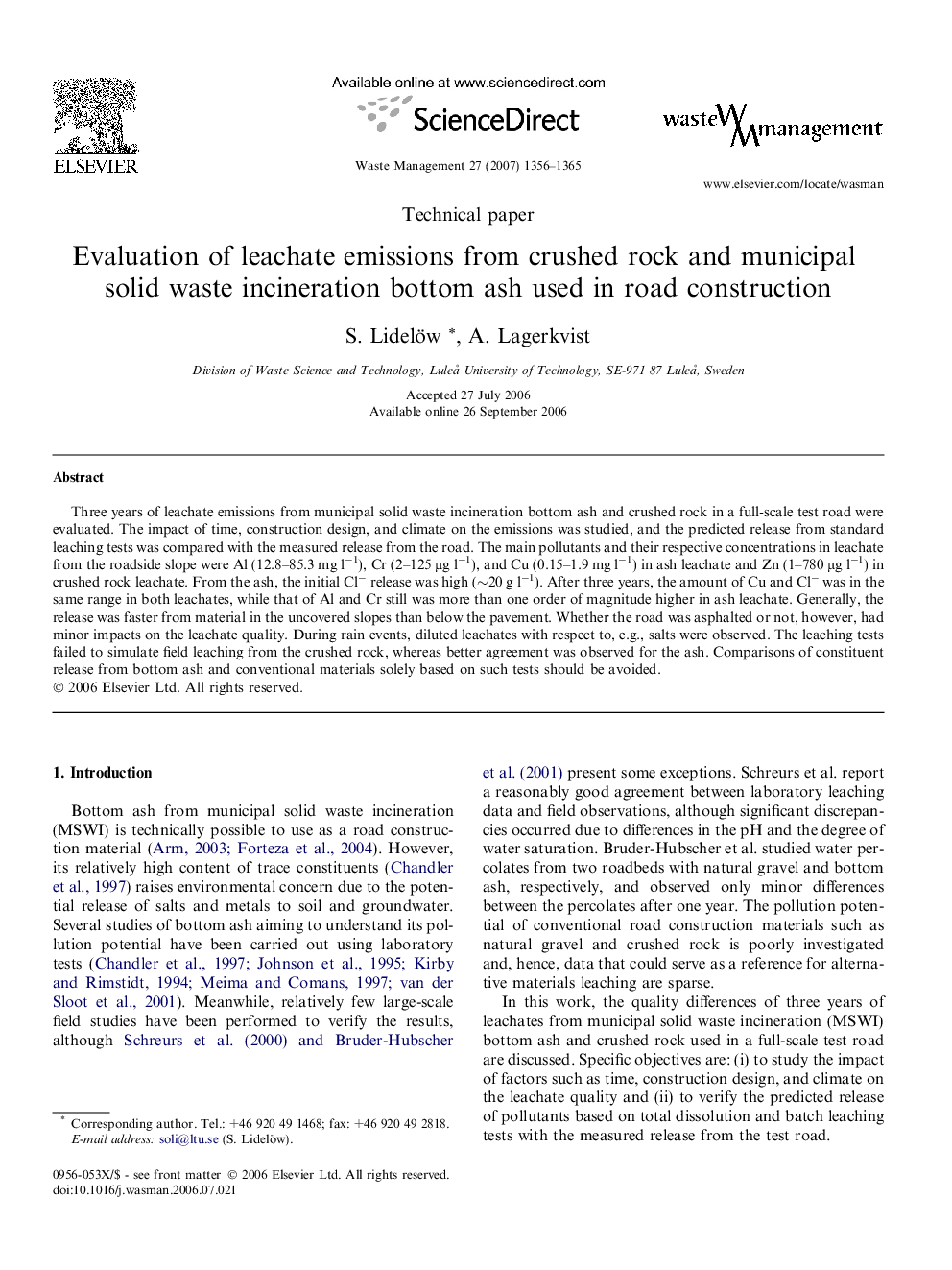| Article ID | Journal | Published Year | Pages | File Type |
|---|---|---|---|---|
| 4473440 | Waste Management | 2007 | 10 Pages |
Three years of leachate emissions from municipal solid waste incineration bottom ash and crushed rock in a full-scale test road were evaluated. The impact of time, construction design, and climate on the emissions was studied, and the predicted release from standard leaching tests was compared with the measured release from the road. The main pollutants and their respective concentrations in leachate from the roadside slope were Al (12.8–85.3 mg l−1), Cr (2–125 μg l−1), and Cu (0.15–1.9 mg l−1) in ash leachate and Zn (1–780 μg l−1) in crushed rock leachate. From the ash, the initial Cl− release was high (∼20 g l−1). After three years, the amount of Cu and Cl− was in the same range in both leachates, while that of Al and Cr still was more than one order of magnitude higher in ash leachate. Generally, the release was faster from material in the uncovered slopes than below the pavement. Whether the road was asphalted or not, however, had minor impacts on the leachate quality. During rain events, diluted leachates with respect to, e.g., salts were observed. The leaching tests failed to simulate field leaching from the crushed rock, whereas better agreement was observed for the ash. Comparisons of constituent release from bottom ash and conventional materials solely based on such tests should be avoided.
